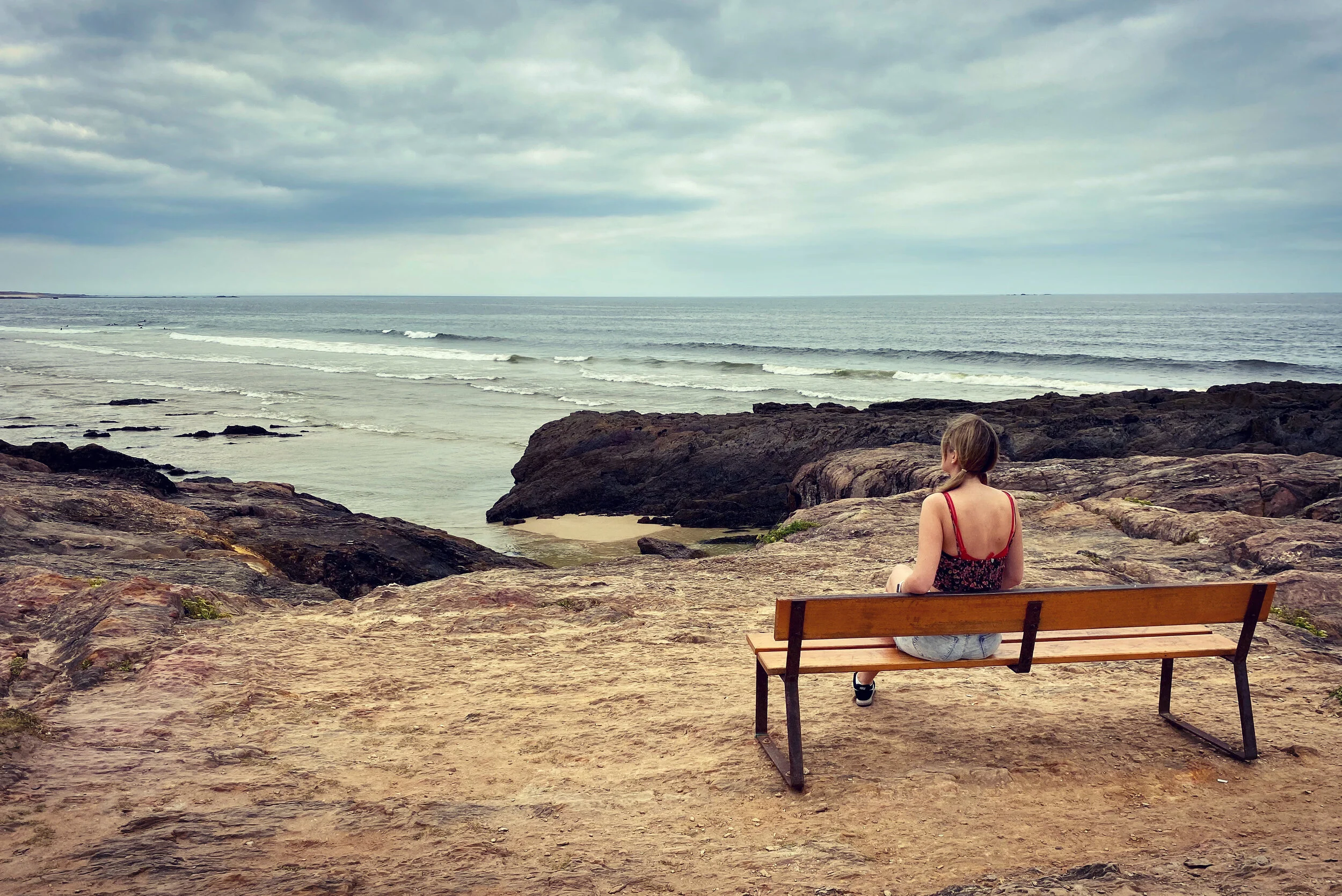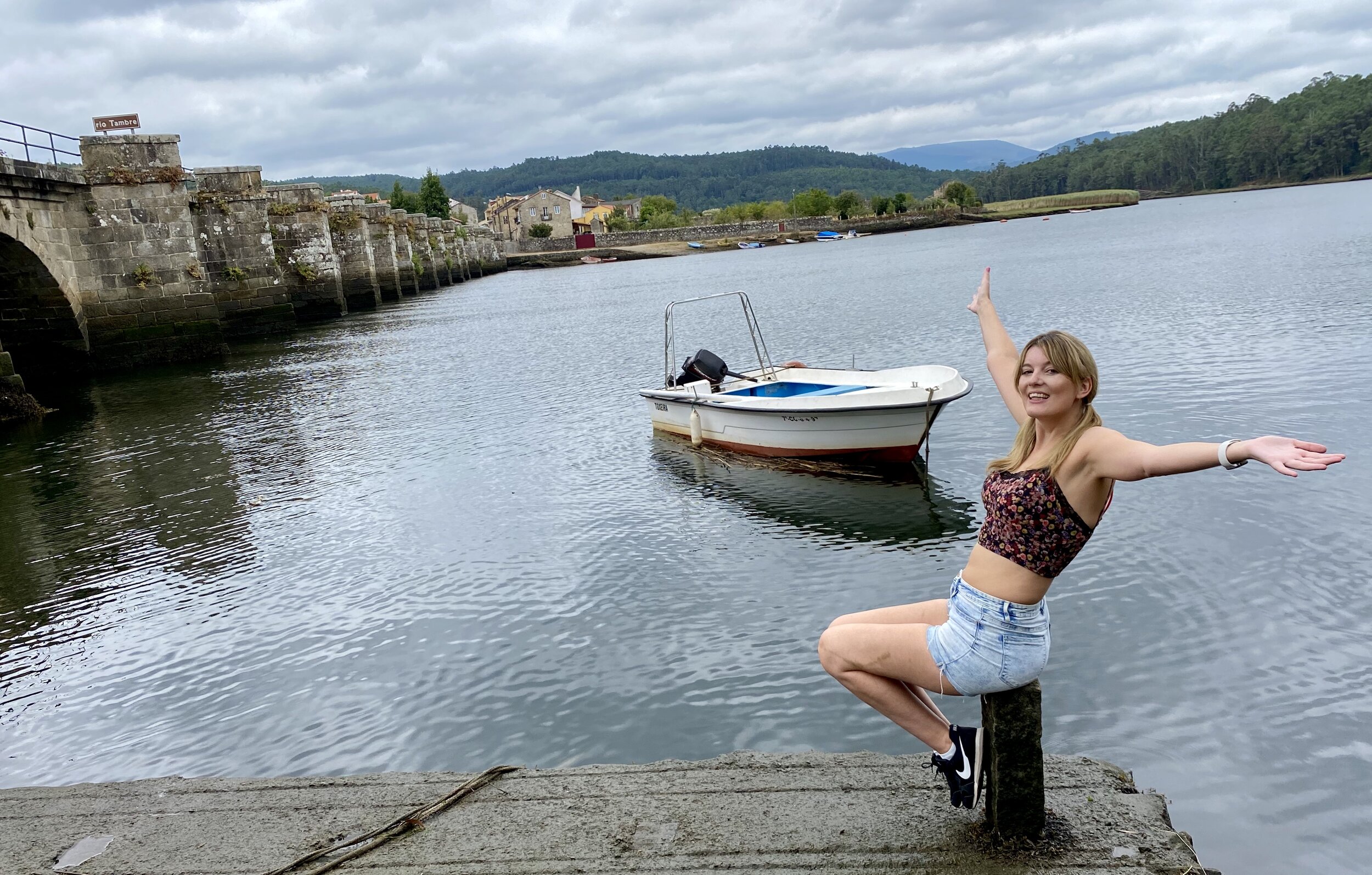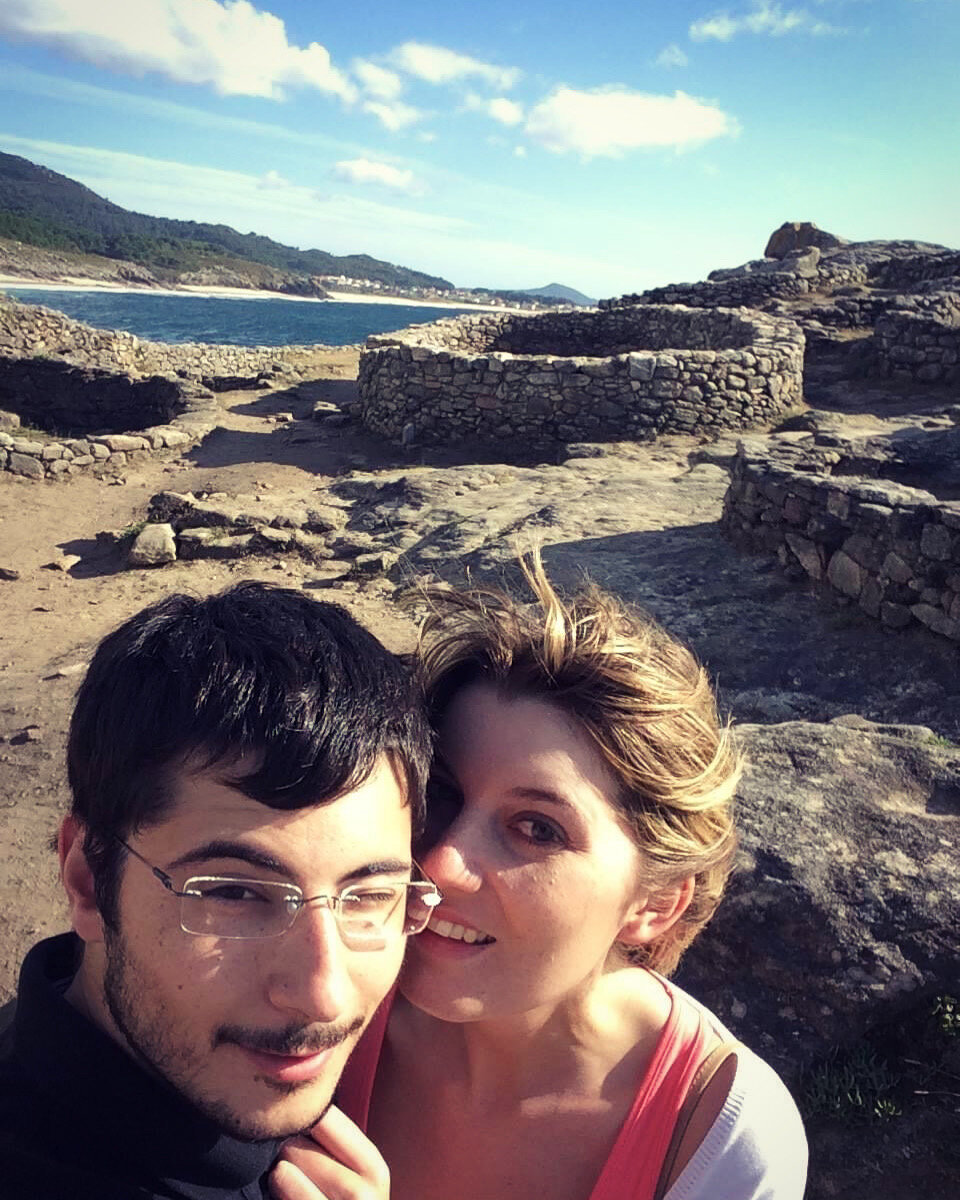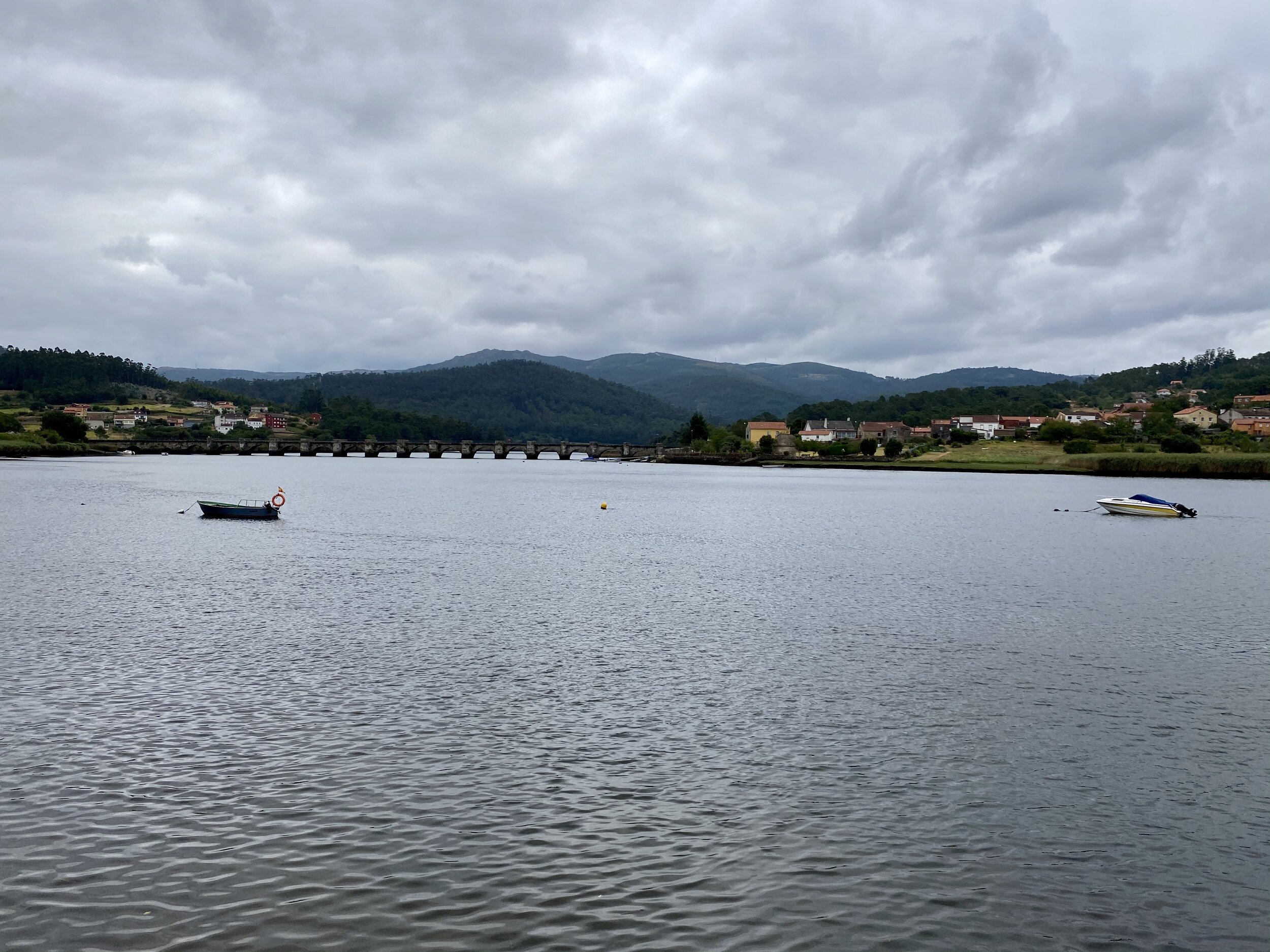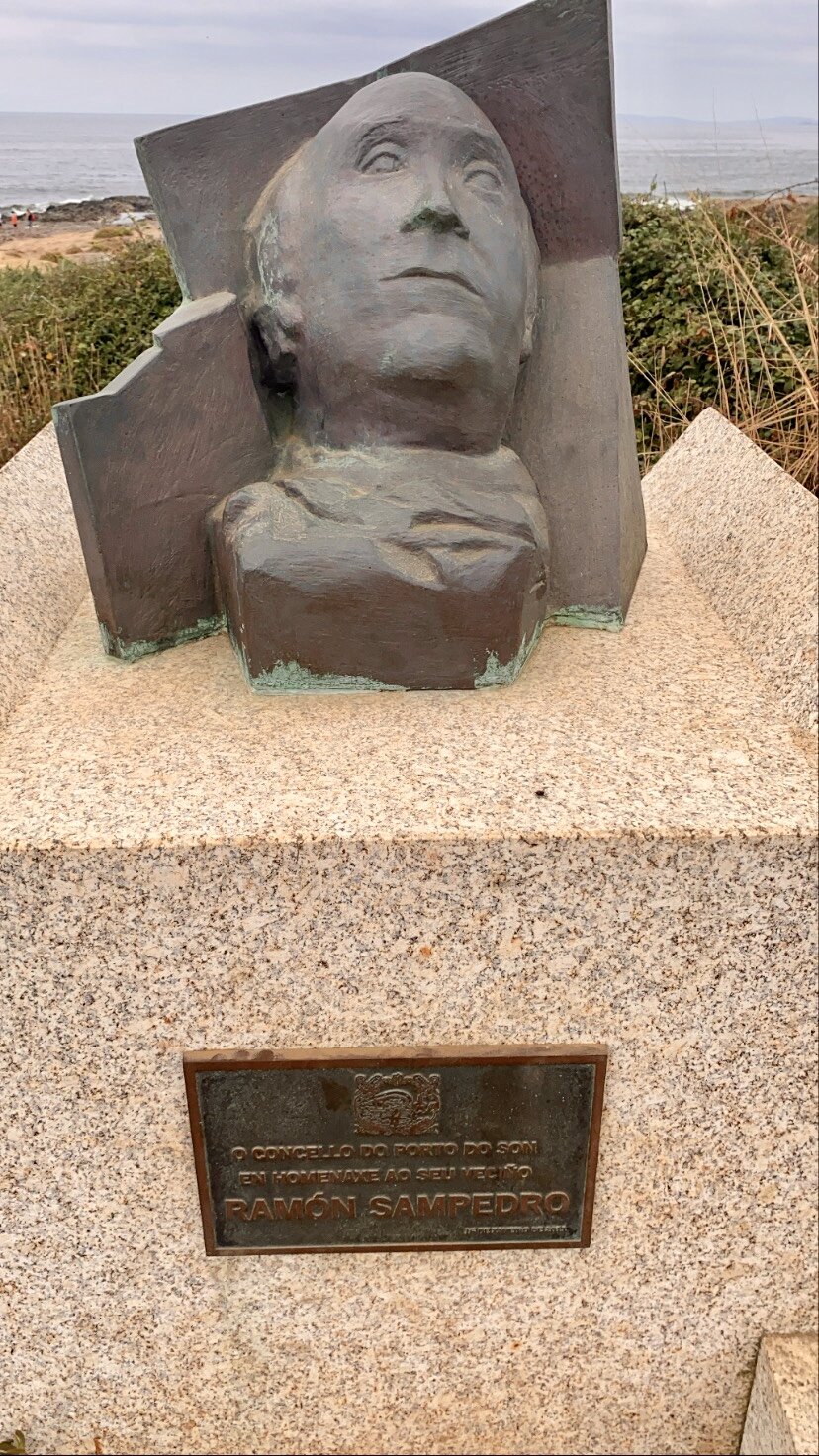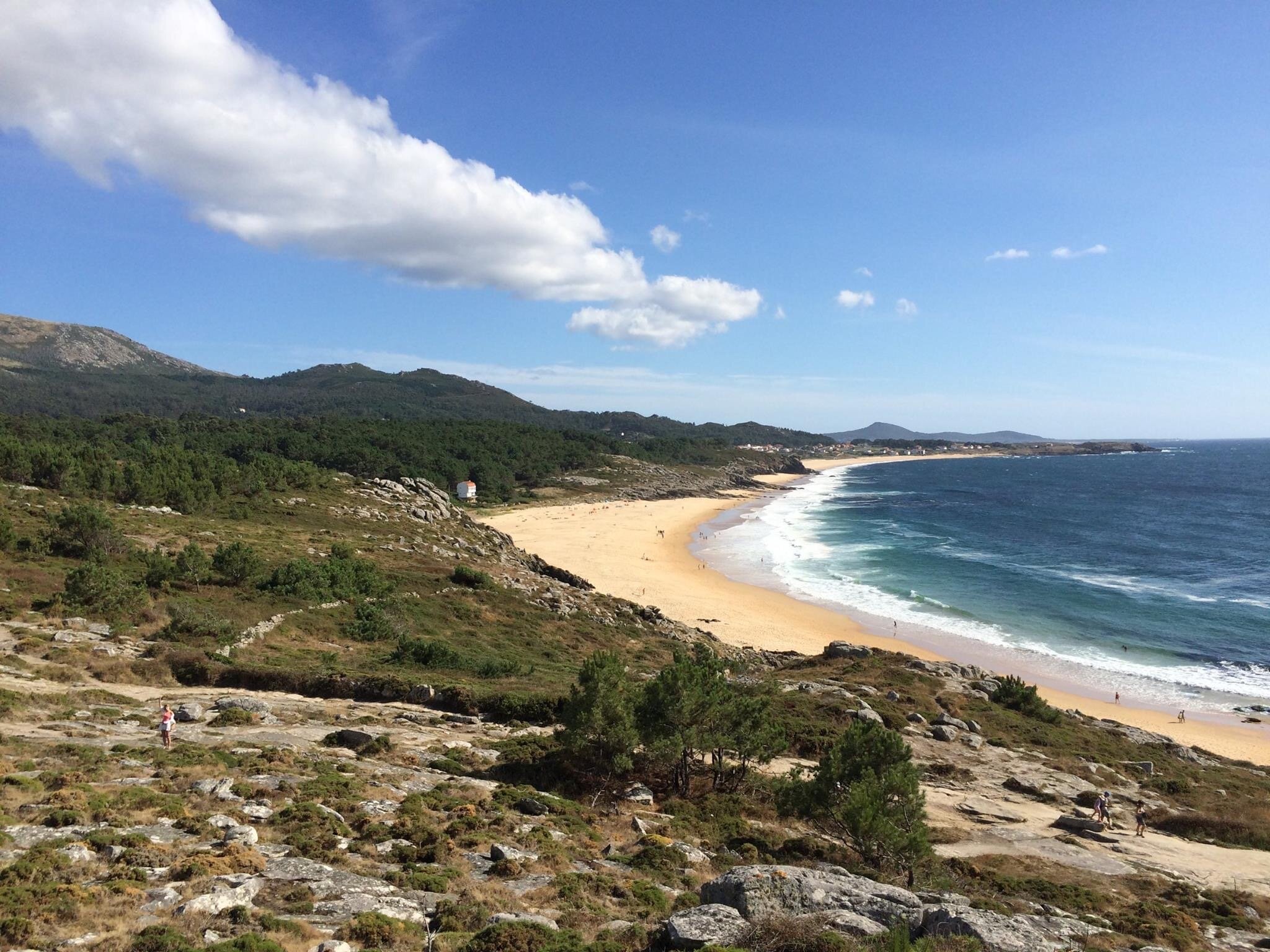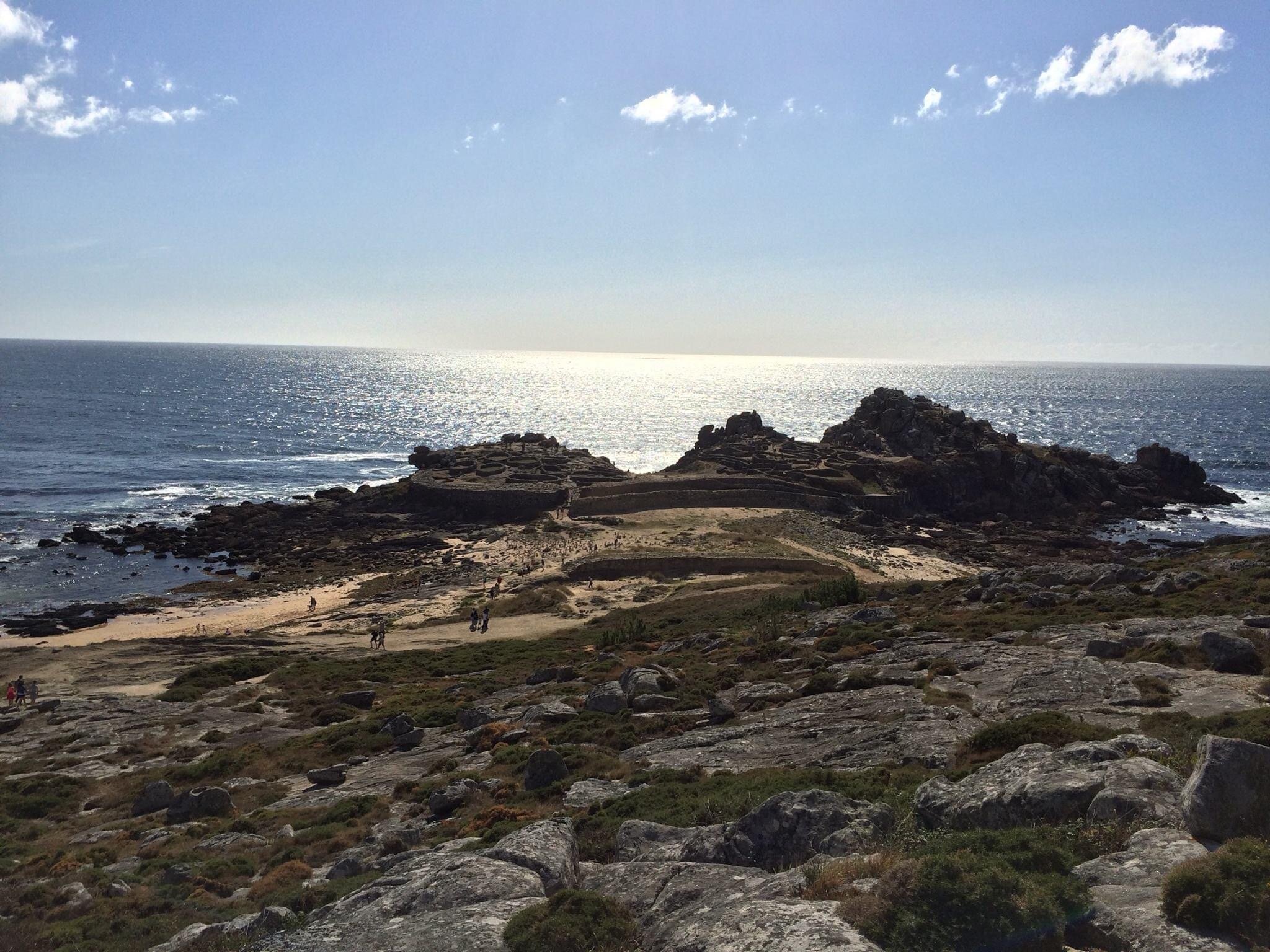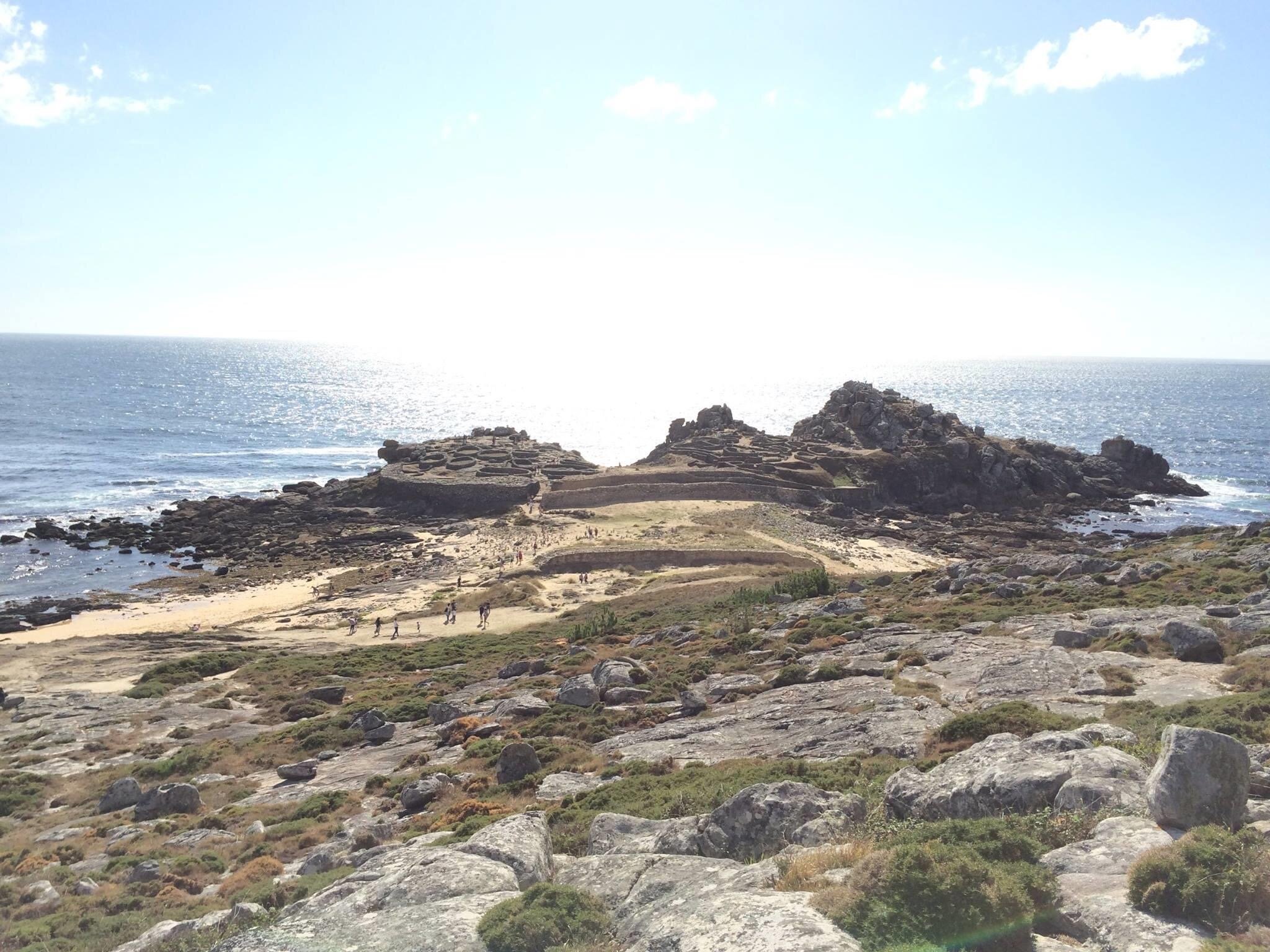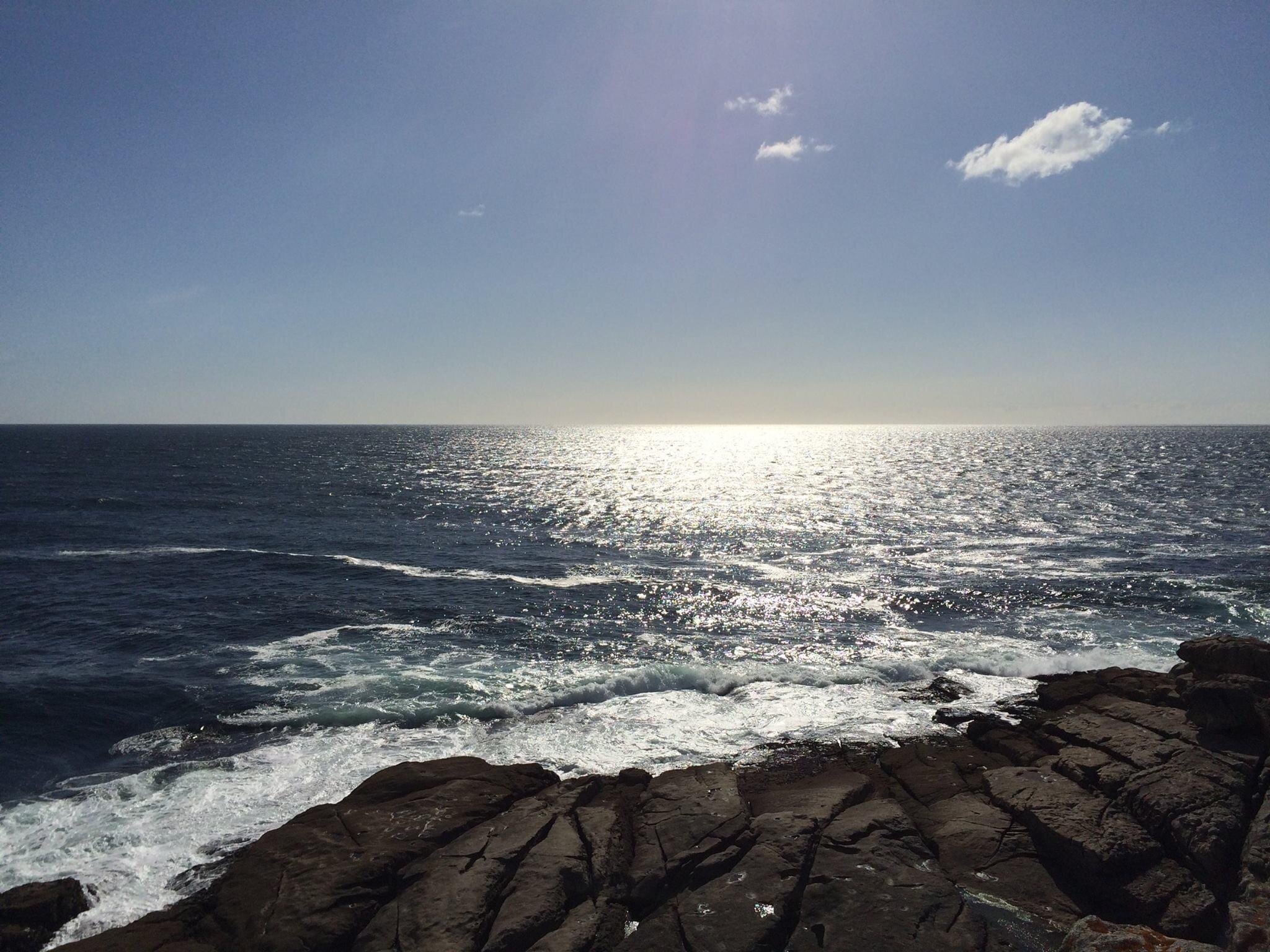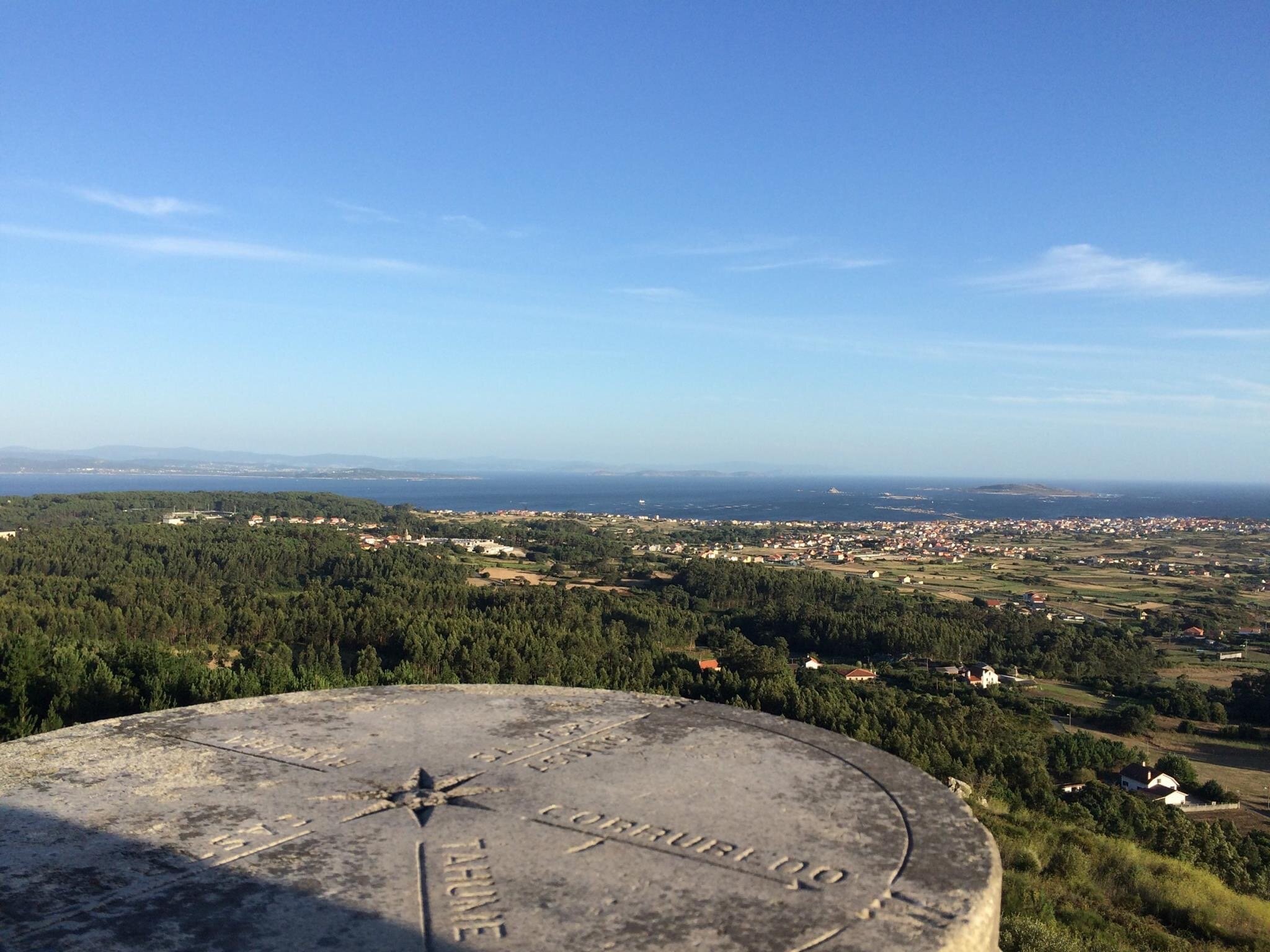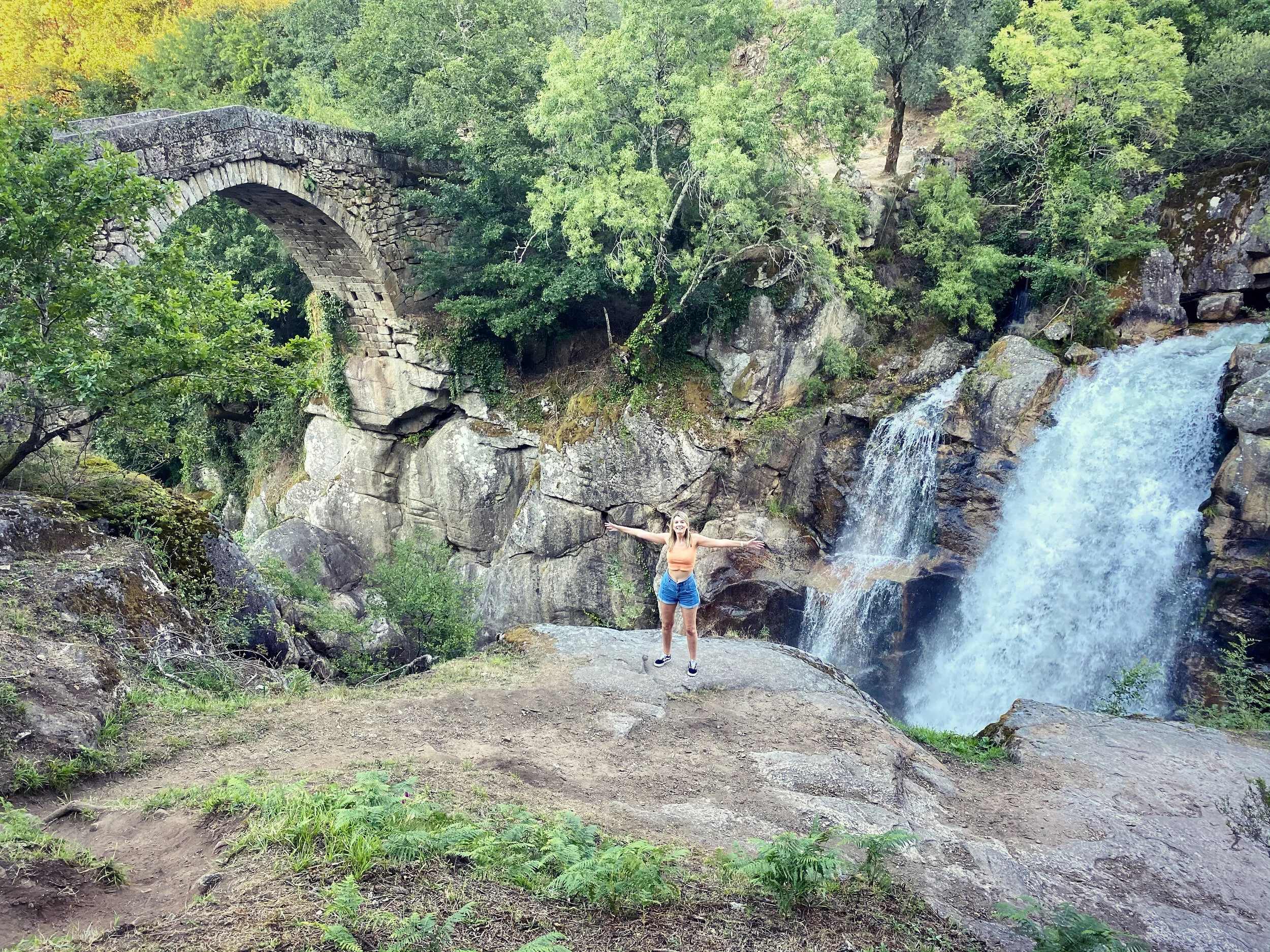GALICIA: One day road trip through the estuary Ría de Muros e Noia (Noia-Corrubedo)
Galicia well deserves a thousand articles but today I’m going to suggest a one day road trip through the estuary Muros e Noia -starting from Noia and finishing in Corrubedo. It has something for everybody- beaches, hiking routes, rivers, prehistoric monuments, movie landmarks…
Suite “Auganeve”, casa do Zuleiro.
Before I start, I would love to recommend the place we stayed the night at, Casa do Zuleiro. It is an excellent option if you are looking for a romantic getaway. The suite we booked was called “Auganeve” and it had a jacuzzi in the room- that’s why I chose it! ;) Make sure to book in advance because their rooms are always full. The hotel is located in a small rural village and the building is absolutely gorgeous. Disconnection is guaranteed. However, the prices are quite expensive -we paid 155€ for just one night. It includes a small bottle of champagne or wine, snacks in the room, and a breakfast buffet. If you are looking for a cheaper accommodation, there are plenty of places to stay including camping sites. No matter where you stay, I would highly recommend to stay near this location because it is half way to the other side of the estuary which is absolutely stunning.
So now, let’s get into the BEST PLACES TO SEE from Noia - Corrubedo.
Tambre Power Station
Suspension bridge over the Tambre river
Tambre Power Station and hiking routes
I know, it sounds really weird. Why anybody would start a route at a power station? Simply because it is not an ordinary power station. The building was designed by the late Galician architect Antonio Palacios who also designed several buildings in Madrid.
If you love hiking, cross the suspension bridge located over the Tambre. On the other side of the river, you will find indications for three different hiking routes. One of them is called “the route of the lamprey”, the oldest species of fish on the planet and one of the most horrible fish you will ever see. Here it is considered a delicacy and people eat it cooked in “its own sauce,” meaning its blood!
Medieval Nafonso bridge
It is unclear when this bridge was originally built but researchers agree it was sometime along the 12th century. Today, it is one of the longest medieval bridges in Galicia. It is a great spot if you like photography.
Nafonso Bridge
3. Castro de Baroña
Castro de Baroña.
A castro is a Galician fortified settlement of the Bronze and Iron Ages. They were usually built at high elevations as a strategic defensive measure. Houses were typically round and made of stone with roofs made of hay. The number of castros built in Galicia during the prehistoric times is unknown but experts estimate around 3,000.
The Castro de Baroña was built in the 1st century B.C. and used until the 1st century A.C. This castro is not one of the biggest in size in Galicia but it is undoubtedly one of the most beautiful ones and my personal favorite. Its location near the sea would leave you speechless.
Castro de Baroña, aerial view
4. “As Furnas” beach
As Furnas
This is one of the beaches in Galicia where surfers enjoy great waves and constant wind. However, it is infamous for the terrible accident that left Ramón Sampedro quadriplegic. When Ramón was 25 years old he jumped to the sea from one of the cliffs you can see today. He misjudged the depth of the water and struck his head on the seabed becoming paralyzed from the neck down.
Javier Bardem as Ramón Sampedro
The story of Ramón Sampedro and his 28 year campaign in support of euthanasia and the right to end his life is portrayed in the Oscar winning Spanish movie Mar Adentro (The Sea Inside) which was directed by the Spanish director Alejandro Amenábar and starred by the Spanish actor Javier Bardem. Some of the scenes of the movie were filmed at this location.
Place of the accident and commemorative plaque
Today, there is a commemorative plaque carved on the rocks indicating the very same place from where Ramón jumped into the sea. There is also a bust in memory of Ramón at the entrance of the beach. The feeling I experienced standing on the place where something so terrible happened still haunts me to this day.
“My mind is the only alive part of my body. I’m a head tied to a corpse.”
Ramón Sampedro
5. Dolmen de Axeitos
The Dolmen de Axeitos is a prehistoric megalithic dolmen dated to 3600 - 4000 B.C. Dolmens were a single chamber megalithic tomb consisting on two or more vertical megaliths supporting a flat horizontal stone. In the Dolmen de Axeitos you can still find some prehistoric petroglyphs inside the chamber. However, if you see a dumb fish carved on one of the outer stones, disregard its existence. It is the result of vandalism acts made around 1997. I still can’t understand why people believe it’s funny to do such things to ancestral monuments that have been standing here for millennia.
6. Dunas de Corrubedo
The Dunes of Corrubedo Natural Park is a four square miles natural park. It is one of the most visited parks in Spain. It consists of the sand dunes, the Corrubedo beach, and the lagoons of Vixán -fresh water- and the lagoons of Carregal -salt water. Needless to say, the park is the house of a number of waterfowl species. The sand dune is one km long, 200-250 meters wide and up to 20 meters high. However, locals recall it to be much higher. Because of human lack of concern nature, the dunes grew smaller. That’s why it is absolutely forbidden to invade the dunes today facing a 6,000 euros fine. You can still visit the dunes and the whole park taking some of the paths that show you the area as much as possible while respecting the environment.
How long is the route?
In the following screen capture you can see the route from the Tambre Power Station to the Dunes of Corrubedo. The Dolmen of Axeitos is not marked in the map but it is located 6 minutes away from the Dunes. The rest of the places to visit are along the coast. Use google maps to reach the destinations.
Where can I eat?
Galicia is famous for its food so anywhere you go you will likely find something good to eat. You can choose a restaurant in the village of Noia - a very nice fishing village- and enjoy its fresh seafood. Pick almeixas (clams) or navallas (razor shells). Squid is always a great choice too.
Is there anything else worth seeing?
The other side of the estuary has amazing places to see; the village of Muros, the beach of San Francisco and the mountain Monte Louro, the beach Area Maior with its dunes and lagoon, the beach of Ancoradoiro, the large raised granary of Carnota, the beach of Carnota, -the longest beach in Galicia-the waterfall of Ézaro, Fisterre, and even some petroglyphs. A new article is being written on this. Stay up to date!

